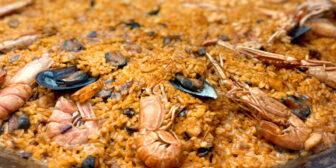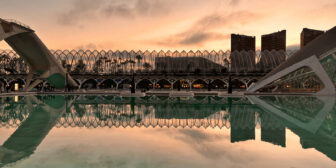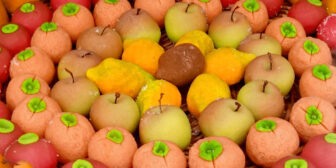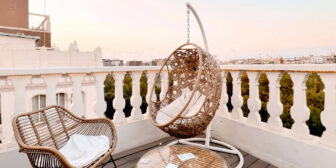Albufera Natural Park (Parque Natural de la Albufera in Spanish or Parc Natural de l’Albufera in the local Valenciano language) is one of the most important wetlands in Europe. It is situated just south of Valencia and is renowned for its stunning landscape, legendary sunsets, and for being the cradle of paella.
Living in Valencia, I often go to Albufera to escape the hustle and bustle of the city and I’m always amazed by its ever-changing beauty. Albufera Natural Park is one of the easiest day trips from Valencia and here I want to share with you all my favorite spots and tips for enjoying its rice fields, wild dunes, pine forests, secluded beaches, and freshwater lake.
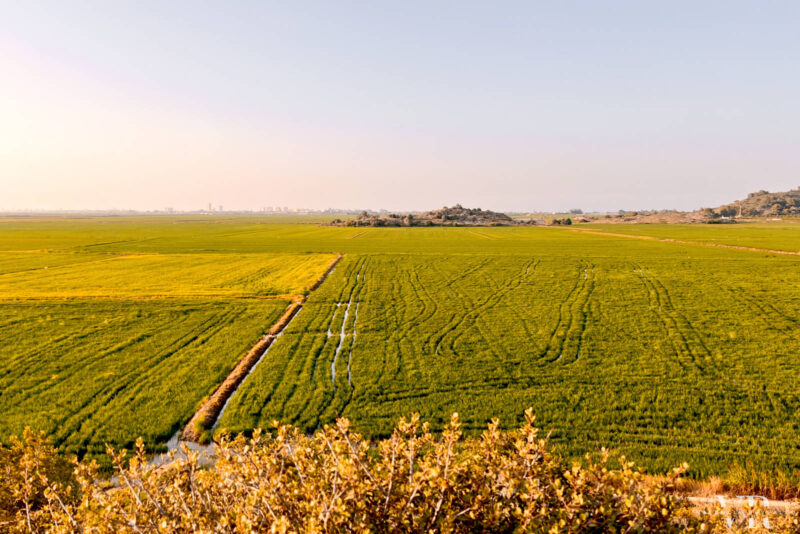
In This Article
Brief intro to Albufera Natural Park
Area: 21,000 hectares
Lake surface area: 2,800 hectares
Year declared a national park: 1986
Best known for: The outstanding natural beauty of its landscape and for being the birthplace of paella
The Albufera Natural Park stretches from Pinedo in the north to Cullera in the south. The Mediterranean Sea flanks it to the east and a string of towns to the west.
At the heart of the park lies the Albufera Lake. The origins of this lake trace back more than 2.5 million years to the formation of a bay between the mouths of the Turia and Júcar rivers.
Over time, this bay was sealed off by the accumulation of sediment deposits, ultimately evolving into a freshwater lake. The lake continues to be connected to the sea through three channels.
During Roman times, Albufera Lake was ten times its current size. However, with the arrival of the Moors in the 8th century, significant portions of the lake were reclaimed for the cultivation of rice.
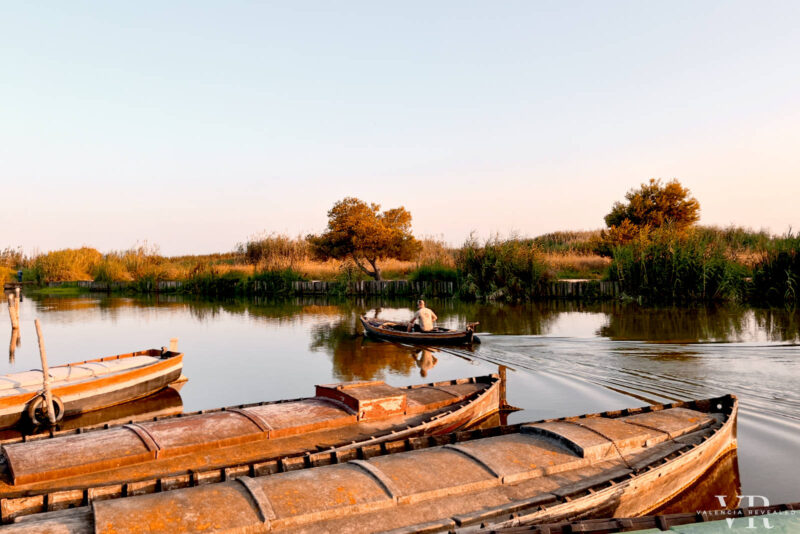
These days, the lake is surrounded by rice fields. The rice varieties predominantly cultivated in this area are Bomba, Albufera, and Senia, all of which are of the short grain variety and have a Denomination of Origin (DO) status.
Albufera Natural Park is separated from the sea by wild dunes and the La Dehesa del Saler pine forest.
Along the coastline, there are several beaches with crystal-clear turquoise waters. These beaches are a closely guarded secret and remain relatively shielded from mass tourism.
Albufera’s dream-like natural wonder is home to approximately 300 bird species and the birthplace of paella. Its name comes from Arabic and means “small sea.”
Things to do in Albufera
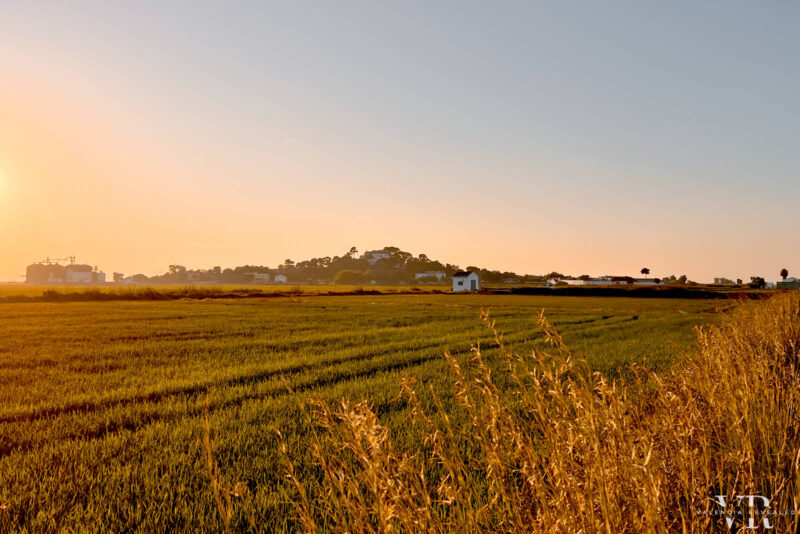
If you’re in Valencia for anything longer than 3 days, I highly recommend you include Albufera in your itinerary. While you won’t be able to see the entirety of this nature reserve in just a few hours, you’re almost guaranteed to have a great time.
If you’re constrained by time, the best option is to book an organized tour. Otherwise, start in either El Saler or El Palmar. These two villages are super accessible and close to Valencia, so they are often the first choice for most people.
In my experience, the rest of the Albufera Nature Reserve remains largely unexplored even as it hides some truly remarkable gems. Although I’ll mention some of them here, it’s important to keep in mind that these spots may be less developed or harder to reach than the more popular tourist areas.
Explore Albufera Lake by boat
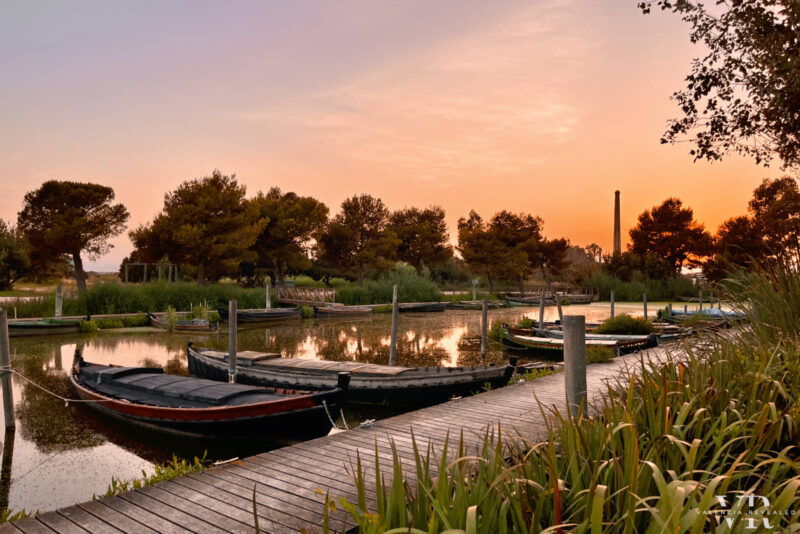
One of the most popular things to do in Albufera is take a leisurely boat ride across the lake. Boat rides are great for discovering this picturesque landscape, seeing some of the few remaining barracas (19th-century reed and mud huts), and spotting different bird species.
The best time of the day to take a boat ride on the Albufera Lake is just before the sun sets. Boat ride prices start from €5 per person during the day and slightly more at sunset.
Boat tour starting points: The two most popular places are the village of El Palmar and Mirador del Pujol. You can also take a boat from Port de Catarroja, Port de Silla, and El Saler, but in this case, the boat navigates through a channel before reaching the lake and you have to book in advance.
Savour authentic paella in El Palmar
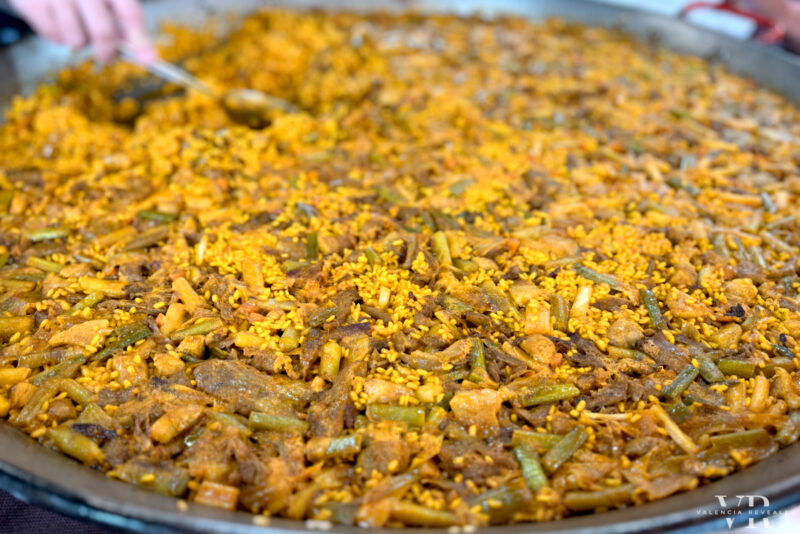
El Palmar is a traditional fishing village situated right at the heart of Albufera Natural Park. It is widely recognized as the birthplace of paella and therefore it’s super popular with tourists and locals alike.
The village has under a thousand inhabitants and I wouldn’t say it’s particularly pretty, but it’s the best place to eat paella in Valencia, so people flock here pretty much any day of the year. Booking a table in advance is highly recommended, but be aware that most of the restaurants are only open for lunch.
Where to eat paella in El Palmar: El Palmar has a couple of dozen restaurants, all specializing in paella and you can’t go wrong with any of them. Among my favorites are Arrocería El Rek (they have a large terrace with lake views) and Arrocería Maribel (listed in the Michelin guide).
Cycle through Albufera’s scenic trails
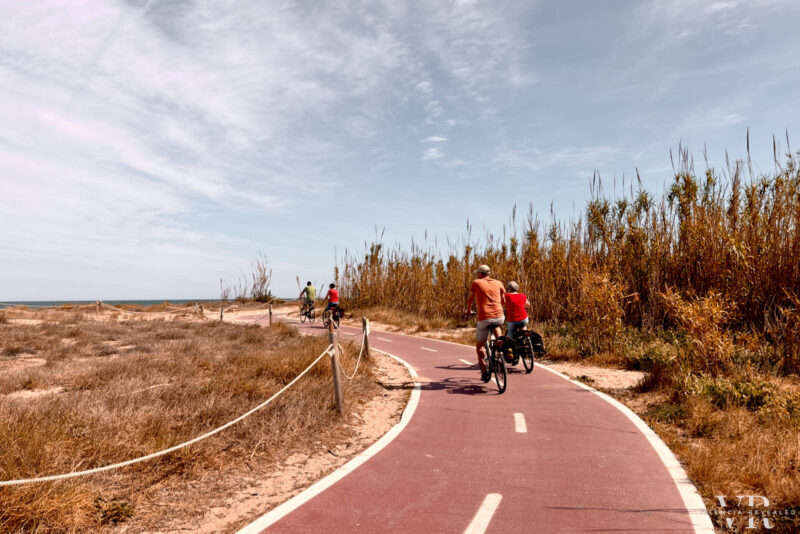
Albufera has some of the best cycling routes in Valencia, so if you enjoy biking, I highly recommend you rent a bike and explore it on two wheels. A continuous bike lane connects Valencia to Albufera Park, running alongside the beach and passing through the La Dehesa del Saler pine forest before reaching El Palmar.
From El Palmar, you can continue biking to Muntanyeta dels Sants, but this is a long ride that not many people venture on. After El Palmar, there are almost no paved roads among the rice fields, but the terrain is as flat as a paella pan and has a low difficulty level.
If you don’t want to exhaust yourself, an alternative is to take the cercanías train line C1 or C2 from the North Train Station to Catarroja, El Romaní, or Sueca and start exploring Albufera from there. You can take your bike aboard all cercanías short-distance trains free of charge.
Catch a breathtaking sunset
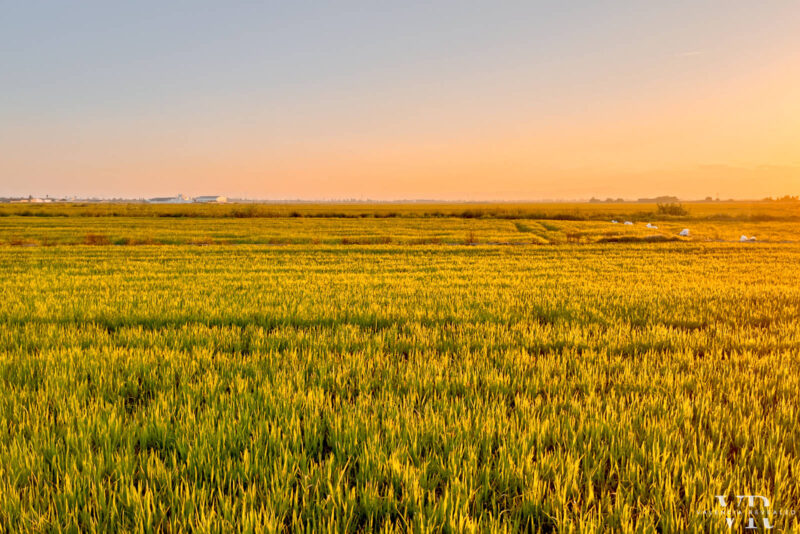
For a truly magical end of the day, I recommend adding “watching the sunset in Albufera” to your list of things to do in Valencia. This is a great opportunity to take some amazing photos, enjoy a romantic evening, or simply be entranced by the sheer beauty of this park.
Whenever I visit, I always try to stay until sunset, as I believe this is when Valencia’s Albufera Park reveals its true beauty. It’s incredible how the landscape transforms and everywhere you look seems touched by magic. But I’m not the only one who thinks this. Albufera is renowned for being one of the best places to watch a sunset in Valencia and many locals drive here just for that.
Best places to watch the sunset in Albufera: The most popular spot for watching the sunset over Albufera Lake is Mirador del Pujol, but this spot can get pretty crowded. So I usually prefer seeing the sunset from the lesser-known Port de Catarroja (sunset over a little harbor with cute boats), Muntanyeta dels Sants (sunset over the rice fields), and the Rice Museum in Cullera (also over the rice fields).
Embark on a bird-watching adventure
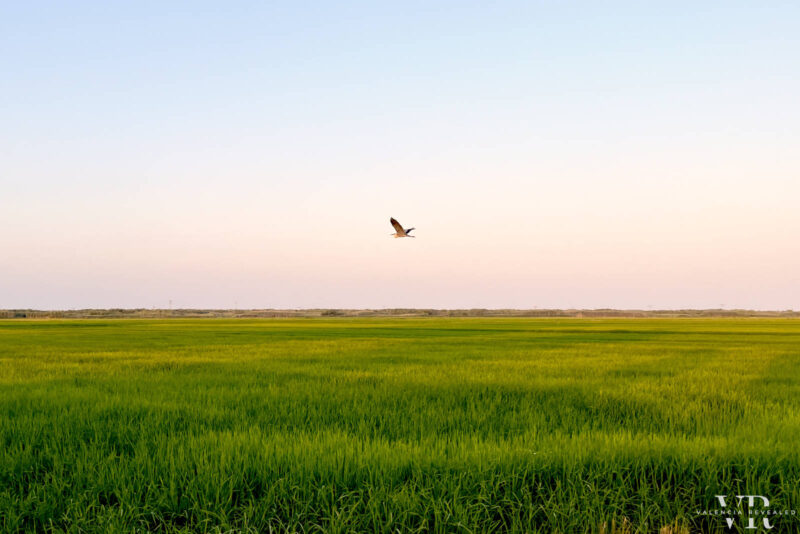
Albufera is a paradise for birdwatching enthusiasts, as there are hundreds of species living here, from seagulls and ducks to graceful flamingos.
The most common bird species that I’ve seen among the rice fields are the white egrets, black herons, and coots. Flamingos and other larger bird species are more elusive, but whenever they grace me with their presence, it always makes my day.
The best season for birdwatching in Albufera is spring, when you can witness the arrival of migratory birds. But if you’re not a hardcore birdwatcher, I think you’ll have a blast seeing Albufera’s avian residents regardless of the season.
Best places for bird watching in Albufera: Some of the best places for bird watching are Tancat de la Pipa, Tancat de Mília, and Tancat de l’Illa. As a general rule of thumb, your chances of seeing a variety of bird species increase as you get nearer to the lake and skyrocket if you take a boat ride.
Unwind on secluded beaches
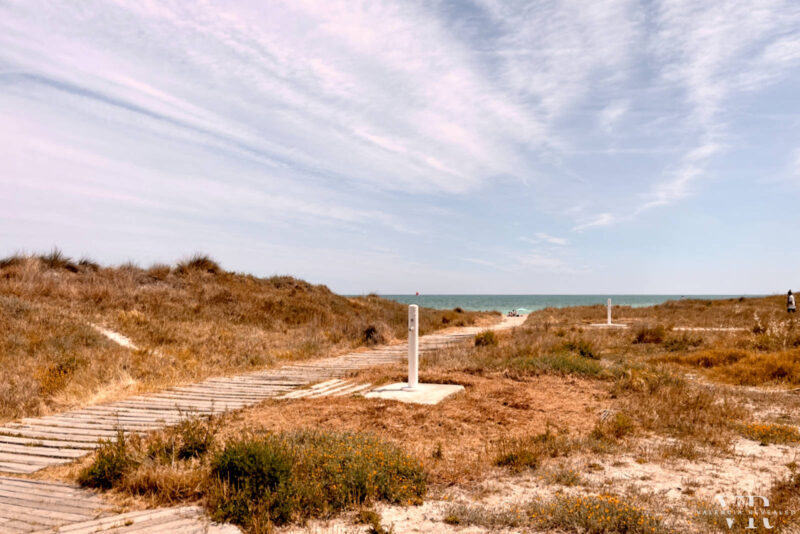
A succession of beautiful sandy beaches separates the Albufera Natural Park from the sea. Some of them have Blue Flag status but they are notably less crowded compared to those in Valencia.
What makes these beaches extra special, in my opinion, is that they are bordered by wand dunes and even a picturesque pine forest spanning from El Saler to El Perellonet. The forest has several paved paths that you can follow both on foot and by bike.
Best beaches along Albufera: Among the most popular are Playa de Pinedo, Playa del Saler, and Playa de la Garrofera. It’s important to note, though, that some services, such as lifeguards, are only available during the swimming season, which lasts from June to September.
Discover Albufera’s rice fields
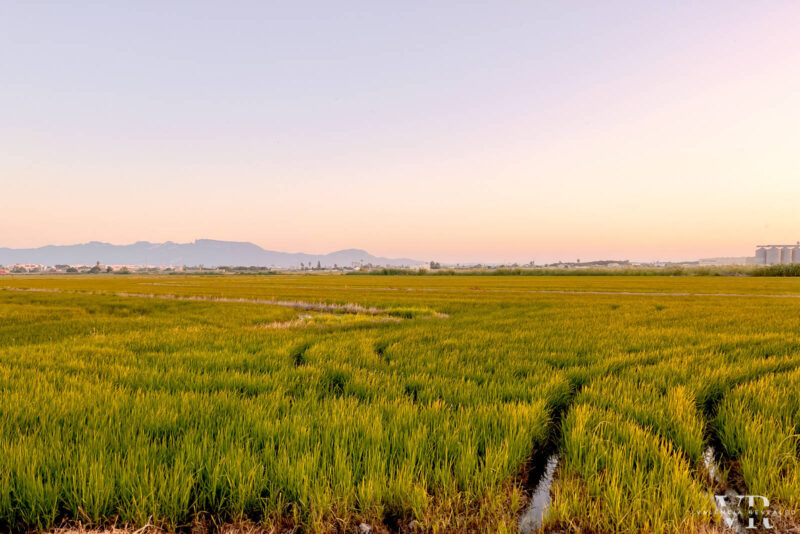
Albufera’s rice fields can be explored on foot, by bike, or by car (ideally a 4×4). You can start from pretty much any town in or around the park and you’re almost guaranteed to find yourself surrounded by beautiful scenery.
Strolling through the rice fields is one of my absolute favorite things to do in Albufera. The rice fields are at their lushest from mid-June to mid-August, with July being the best month to visit.
September is the rice harvest season, so the rice changes color and doesn’t look that pretty anymore. But during the winter months, the magic of Albufera is back as the fields are flooded and form perfect water mirrors.
Best places to visit in Albufera Natural Park
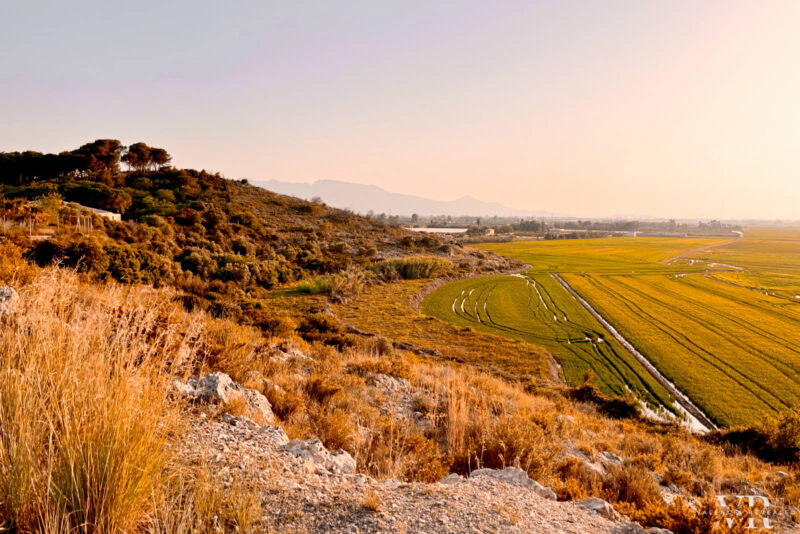
Here are 5 places in Albufera, that for one reason or another, are truly worth a visit.
1. La Dehesa del Saler: A quiet pine tree forest that serves as a buffer between the sea and the lake. There are various routes you can take through the forest and all of them are paved.
2. El Palmar: A small fishing village situated at the southern end of Albufera Lake. The village is surrounded by rice fields and has risen to prominence for being the cradle of paella.
3. Port de Catarroja: A small port with dozens of fishing boats and a couple of restaurants specializing in all i pebre, a potato and eel dish traditional of Valencian cuisine.
4. Muntanyeta dels Sants: A small mountain rising seemingly out of nowhere amidst the rice fields. On top of the mountain, there is a small hermitage from where you can enjoy 360º panoramic views of an otherwise utterly flat landscape. Perhaps the most unexpected scenery inside Albufera Natural Park.
5. Rice Museum of Cullera: Situated on the outskirts of Cullera, this small museum inside a whitewashed hermitage is perched atop a mountain from where you can enjoy breathtaking sunsets over the rice fields. To visit the Rice Museum in Cullera, it’s best you contact them in advance as they don’t have a set schedule.
Map of the main points of interest in Albufera
Albufera Natural Park in popular culture
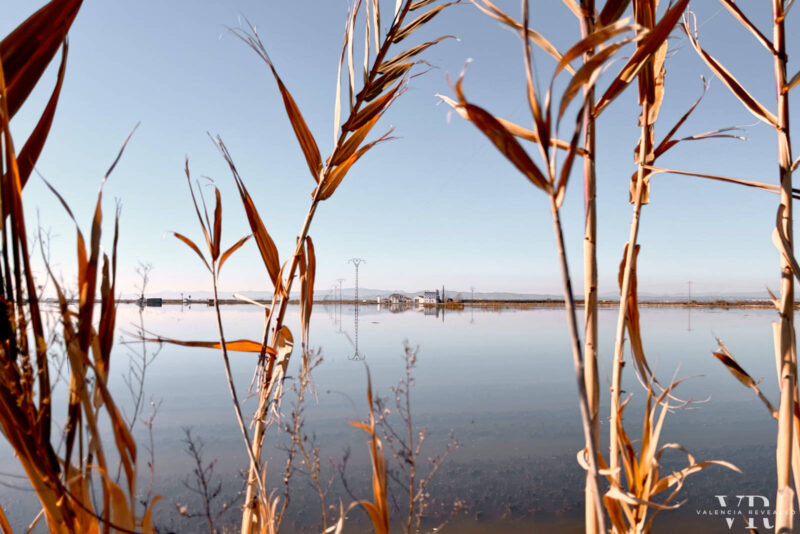
Albufera Natural Park was showcased in Vicente Blasco Ibáñez‘s “Cañas y barro” (Reeds and Mud) novel that portrays the social conditions of the late 19th century in El Palmar and the nearby villages. This novel was made into a TV mini-series in 1978.
More recently, “El Embarcadero” is a contemporary thriller series (2019-2020) that unfolds partially in Albufera and partially in Valencia. It weaves an emotional and gripping tale of two women whose lives become intertwined following the loss of their husband.
I wholeheartedly recommend you watch this series if you haven’t already, not only for the unusual story but also for the whimsical landscape of Albufera that it showcases.
How to get to Albufera Natural Park from Valencia
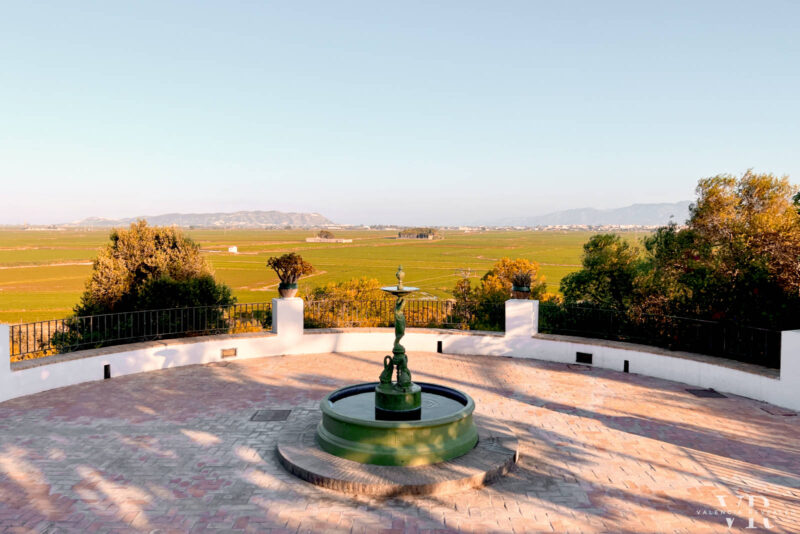
Albufera Natural Park has an area of over 21,000 hectares and is surrounded by several towns and villages from where you can start exploring. Here are some of the best ones.
- El Saler: El Saler is situated 12 km from Valencia and can be reached by car or bus. During the summer months, an express bus service leaves from Puerta del Mar in Valencia and goes all the way to El Saler Beach.
- El Palmar: El Palmar is 20 km from Valencia and you can get there by car or bus (bus #24 or #25 leaves from Puerta del Mar and the City of Arts and Sciences).
- Port de Catarroja: Port de Catarroja is 12 km from Valencia and you can get there by car or by train. The harbour is a 40-minute walk from the train station and you have to go through an underpass that was not designed for pedestrians. So you might want to take a taxi or bring a bike.
- El Romaní: El Romaní is 25 km from Valencia and while you can get there by car, the train station is right next to the rice fields. Bring your bike and explore Albufera towards Tancat de Mília.
- Sueca: Sueca is 37 km from Valencia. You can get there by car or by train. From the train station, there’s a 20-minute walk to the rice fields and a 1-hour walk to Muntanyeta dels Sants. This is quite a lengthy walk, especially under the scorching summer sun, so I recommend biking instead of walking.
- Cullera: Cullera is 45 km from Valencia. You can get there by car or by train. From the train station, there’s a 30-minute walk to the rice fields. Part of the walk is uphill and involves crossing a busy road with no pedestrian crossing.
The best time to visit Albufera
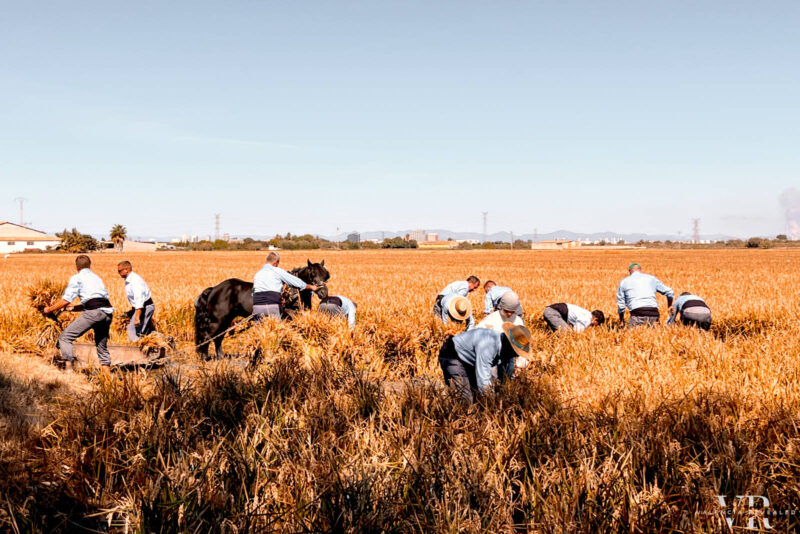
The ideal time to visit Albufera is during the summer months, from mid-June to mid-August, when the rice fields are a stunning lush green hue. However, these are the hottest months of the year and the most challenging if you’re exploring Albufera on foot or by bike.
September is another intriguing month to visit Albufera as the rice harvesting season begins, and a series of festivals are organized in the surrounding villages.
One of my favorite festivals is the “International Valencian Paella Cooking Contest” held in Sueca at the beginning of the month. This festival takes place in the town center and is a fantastic opportunity to taste a variety of paellas.
If you want to partake in an authentic rice harvest festival, you cannot miss the celebrations in Catarroja. These festivities are held in Port de Catarroja next to the rice fields. The festivities include all i pebre and paella tastings, and a demonstration of manual rice harvesting methods.
The winter months, from December to February, can also be a good time to explore the Albufera Park. The flooded rice fields create a perfect water mirror, and the landscape is incredibly pretty, especially at sunset. If you plan to stay in Albufera to watch the sunset, bring warm clothes as it can get quite chilly later in the day.

